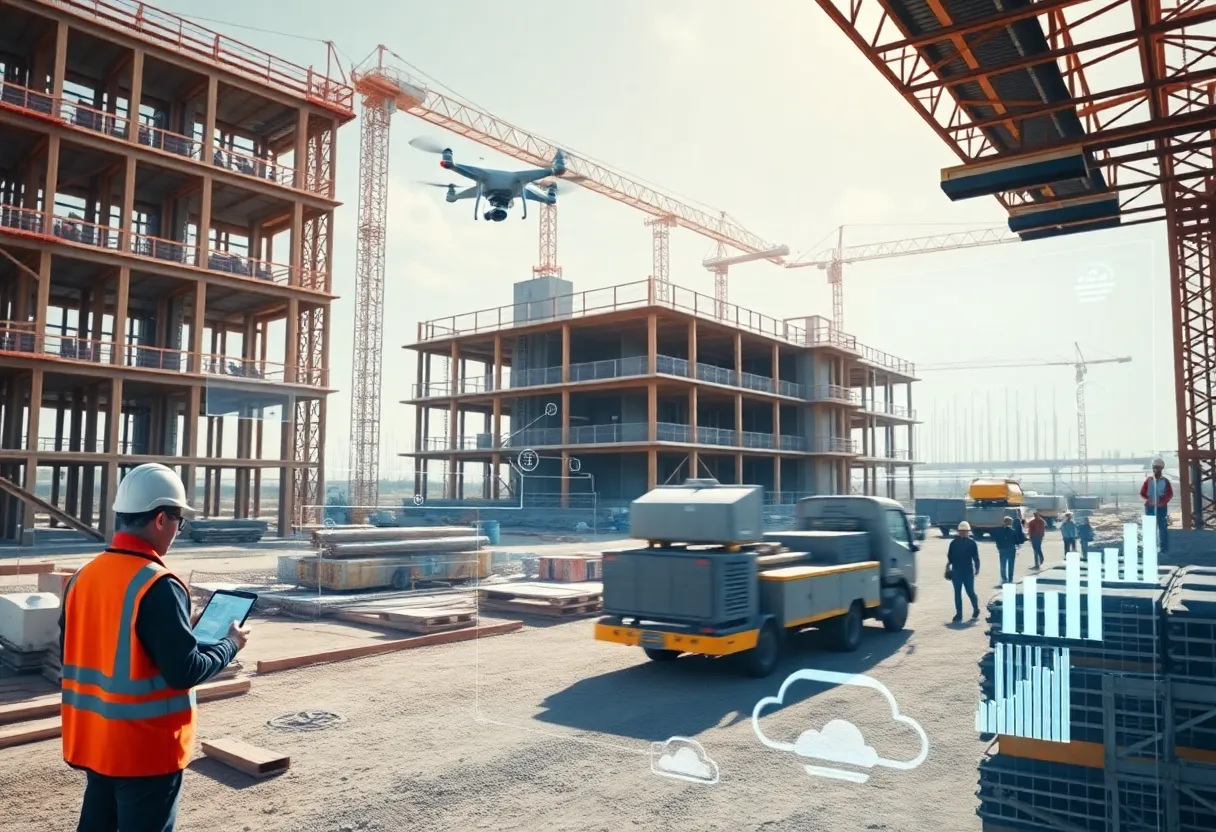News Summary
The construction industry is experiencing a major transformation driven by Building Information Modeling (BIM) and Virtual Design and Construction (VDC). These technologies enhance safety, efficiency, and project outcomes by enabling better visualization and collaboration. BIM provides intelligent digital representations of buildings, while VDC integrates these models with scheduling and cost estimation to optimize workflows. As these technologies gain traction, they hold the promise of revolutionizing the sector, improving logistics, reducing errors, and enhancing overall project delivery.
Building Information Modeling (BIM) Transforms the Construction Industry
The construction industry is undergoing a significant transformation, largely attributed to Building Information Modeling (BIM) and its advanced counterpart, Virtual Design and Construction (VDC). These technologies are streamlining the entire construction process, enhancing safety, efficiency, and overall project outcomes.
Understanding BIM and VDC
At its core, BIM refers to the creation of intelligent digital representations of buildings, allowing project stakeholders to visualize structures before they are built. VDC builds on BIM by integrating digital models with factors such as scheduling, cost estimation, and project coordination. Together, these technologies optimize design, engineering, and operational workflows, leading to fewer errors and improved productivity throughout the construction lifecycle.
Enhancing Safety on Job Sites
Safety remains a top priority in construction, and VDC processes leverage BIM to identify and address potential hazards proactively. Enhanced visualization capabilities help project teams analyze and optimize crane placement, significantly improving job site safety. Moreover, prefabrication techniques enabled by VDC minimize the risks associated with heights, poor weather, and congested work areas. By utilizing digital models for accurate prefabrication, construction components can integrate seamlessly with on-site work, lowering the likelihood of accidents.
Clash Detection and Conflict Resolution
One of the significant advantages of VDC is its clash detection capabilities, which allow for the early identification and resolution of conflicts among various building systems before construction commences. Addressing discrepancies between architectural, structural, mechanical, electrical, plumbing, and fire protection systems in the design phase prevents costly delays and safety hazards during construction.
Revolutionizing Construction Logistics
The integration of scheduling with 3D models through BIM has transformed logistics planning. VDC-driven logistics play a crucial role in preventing trade stacking on job sites, which can compromise safety and productivity. Additionally, BIM automates the extraction of material quantities directly from digital models. This enhanced accuracy in quantity takeoff leads to more reliable budgeting and improved financial outcomes, further optimizing project management.
Future Developments and Technological Integration
The construction sector is poised for greater transformation thanks to emerging cloud-based platforms that facilitate real-time collaboration and integration of digital twins. The adoption of artificial intelligence (AI) is also enhancing digital tools, providing predictive capabilities for scheduling, cost forecasting, and safety management. The growing embrace of BIM and VDC technologies signals a notable shift towards technological integration within the industry, enabling more efficient project delivery and fostering collaboration among teams.
Challenges of BIM Adoption
Despite the clear benefits, various challenges hinder the widespread adoption of BIM technologies. The lack of interoperability among different BIM tools imposes obstacles, necessitating collaborative efforts toward developing standardized practices. Furthermore, traditional firms in Japan and other countries may be reluctant to adopt new technologies due to high software costs and a shortage of skilled professionals.
Addressing Resistance Through Training and Awareness
To optimize BIM implementation, raising industry awareness and providing adequate training across all stakeholder levels are essential. Understanding the advantages that BIM offers, including its capabilities in facility management and building operations, can help alleviate resistance. By fostering a culture that embraces innovation and efficient practices, the construction industry can close the gaps in training and technology that stand in the way of progress.
The Broader Impact of BIM Beyond Construction
BIM’s influence stretches beyond the construction phase. It can significantly impact facility management and building operations through digital twins, which ensure the building functions effectively throughout its lifecycle. The various dimensions of BIM, such as 4D for project scheduling, 5D for cost management, and additional layers for sustainability and operations, paint a comprehensive picture of a project’s requirements and help manage resources more efficiently.
As the industry continues to embrace these digital tools, the potential for improved collaboration and innovation in construction becomes increasingly clear. The transition is well underway, promising a future where safety, efficiency, and profitability are the cornerstones of successful construction projects.
Deeper Dive: News & Info About This Topic
Additional Resources
- OpenPR: Building Information Modeling Market Size Analysis
- Wikipedia: Building Information Modeling
- ScienceDirect: BIM Overview
- Google Search: Building Information Modeling
- ArchDaily: Barriers to BIM Adoption in India
- Encyclopedia Britannica: Building Information Modeling
- Autodesk: What is BIM?
- Google Scholar: Building Information Modeling
- Markets and Markets: Japan BIM Market Analysis
- Google News: BIM in Construction
Author: Construction FL News
FLORIDA STAFF WRITER The FLORIDA STAFF WRITER represents the experienced team at constructionflnews.com, your go-to source for actionable local news and information in Florida and beyond. Specializing in "news you can use," we cover essential topics like product reviews for personal and business needs, local business directories, politics, real estate trends, neighborhood insights, and state news affecting the area—with deep expertise drawn from years of dedicated reporting and strong community input, including local press releases and business updates. We deliver top reporting on high-value events such as the Florida Build Expo, major infrastructure projects, and advancements in construction technology showcases. Our coverage extends to key organizations like the Associated Builders and Contractors of Florida and the Florida Home Builders Association, plus leading businesses in construction and legal services that power the local economy such as CMiC Global and Shutts & Bowen LLP. As part of the broader network, including constructioncanews.com, constructionnynews.com, and constructiontxnews.com, we provide comprehensive, credible insights into the dynamic construction landscape across multiple states.





